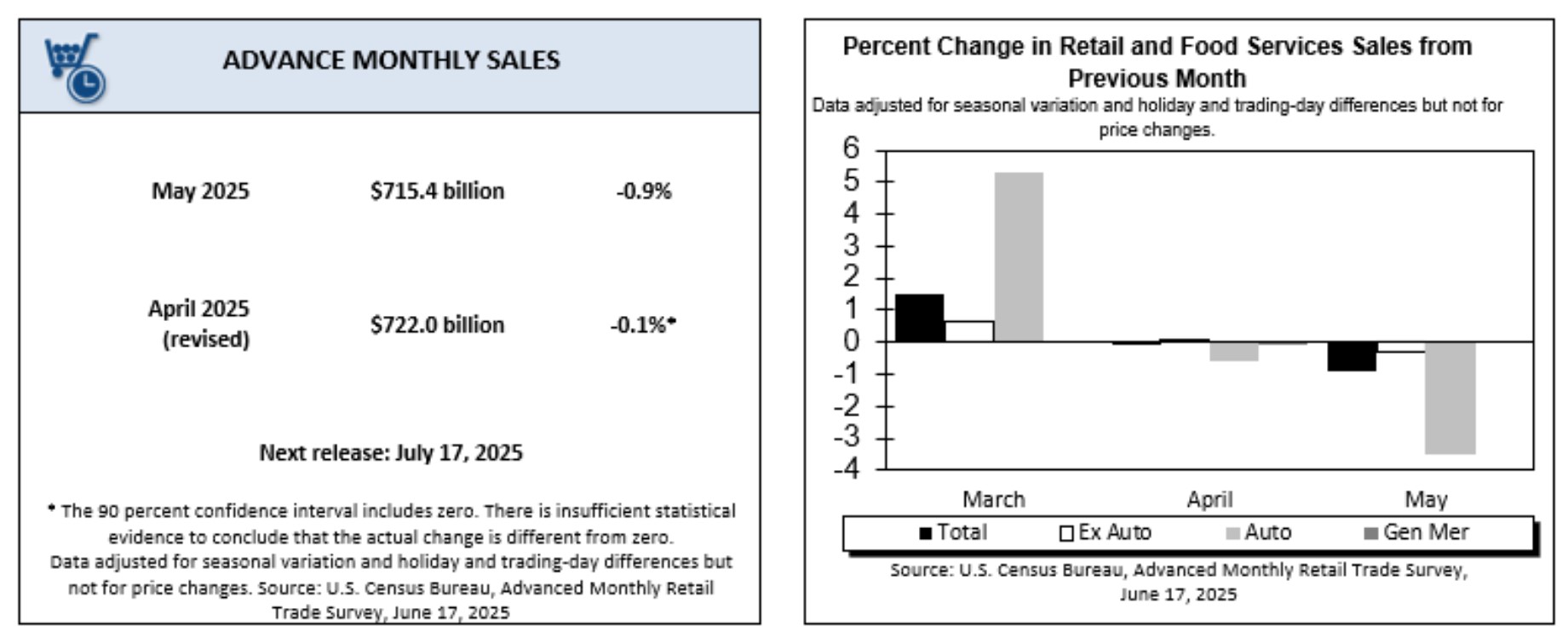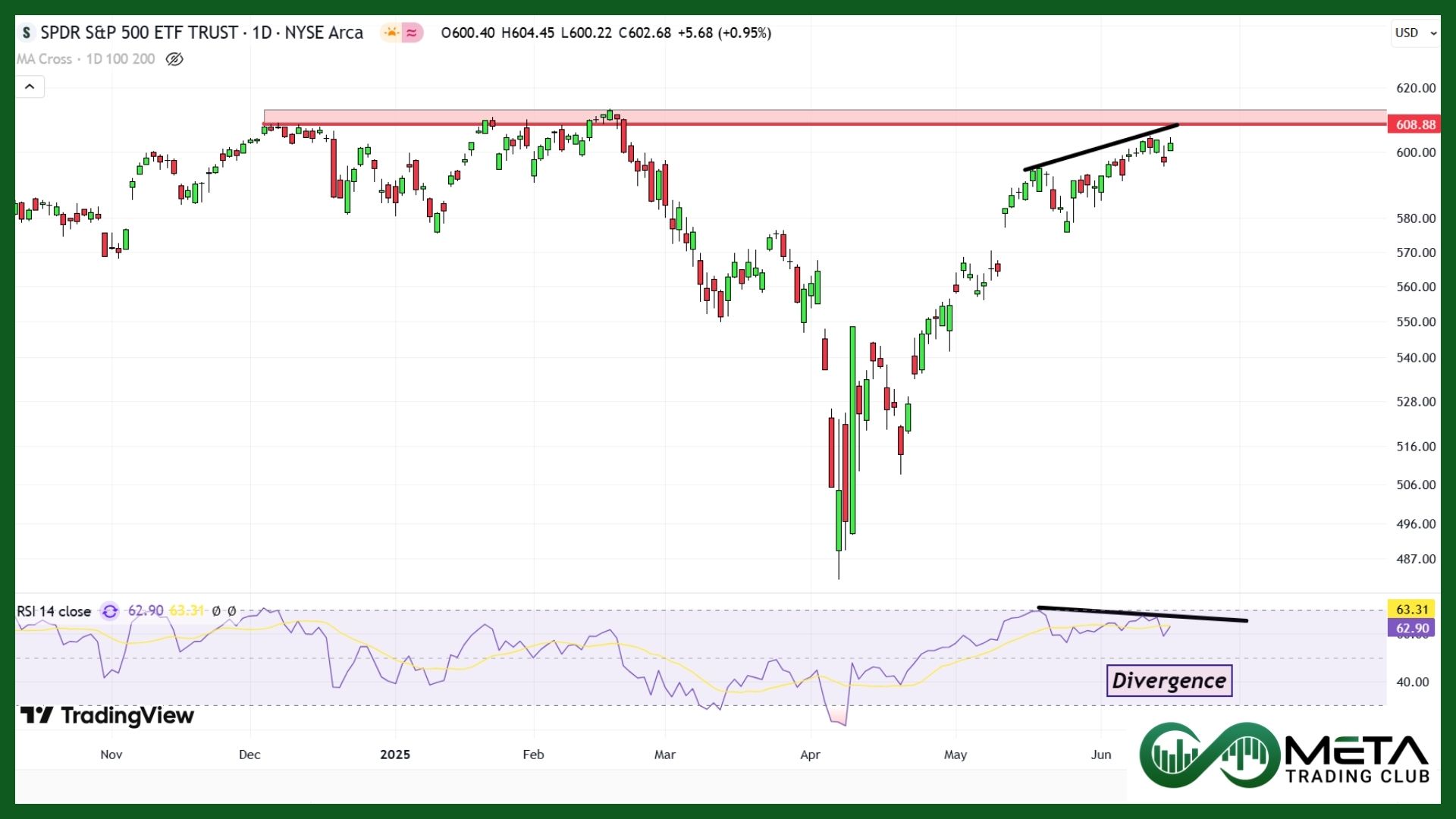Retail sales measure the total value of goods sold in retail stores, covering various products like clothes, electronics, and food. It’s reported monthly and provides insight into consumer spending. Higher retail sales suggest a strong economy as people are spending more money. While lower sales can signal economic slowdowns as people might be spending less.
This indicator is crucial for understanding the health of the economy since consumer spending makes up a large part of it. Economists and policymakers closely monitor retail sales to gauge economic performance and make informed decisions. Retailers also use this data to plan their strategies and meet consumer demand effectively.
May Retail Sales
Advance estimates indicate that U.S. retail and food services sales totaled $715.4 billion in May 2025, marking a 0.9% decline from the previous month. Despite this short-term dip, sales remained 3.3% higher compared to May 2024, showing sustained growth year-over-year.
For the broader March–May 2025 period, total sales increased 4.5% compared to the same timeframe in 2024, reflecting steady consumer spending trends. However, the March-to-April sales change was revised downward from a 0.1% gain to a 0.1% decline, indicating a slight adjustment in previously reported figures.
Retail Sector Performance
Retail trade sales fell 0.9% from April yet remained 3% above last year’s levels. Notably, non-store retailers, which include e-commerce platforms, saw an 8.3% increase year-over-year, highlighting the continued shift toward online shopping. Additionally, food service and drinking places experienced 5.3% growth from May 2024, underscoring stable demand in the dining and hospitality sectors.
In May 2025, retail sales saw notable fluctuations across various sectors. Motor vehicle and parts dealers experienced the most significant decline, falling 3.5%, followed by building material and garden equipment suppliers, which dropped 2.7%. Gasoline stations recorded a 2% decrease, while food services and drinking places declined 0.9%. Other sectors showing declines included food and beverage stores (-0.7%), electronics and appliance stores (-0.6%), and health and personal care stores (-0.1%).
Despite these setbacks, some retail categories showed positive growth. Miscellaneous store retailers led the gains, rising 2.9%, followed by sporting goods, hobby, musical instrument, and bookstores, which increased 1.3%. Furniture sales improved by 1.2%. Clothing stores also recorded a modest 0.8% increase, reflecting steady consumer demand in the apparel sector.
Source: Census.gov
Impacts on the market
The May 2025 U.S. retail sales report presents a mixed economic outlook, showing a 0.9% month-over-month decline but a 3.3% increase compared to May 2024. This suggests short-term consumer caution, likely influenced by economic uncertainties, but long-term resilience in overall spending trends.
Also, inflation concerns may persist, as consumers focus more on essential goods rather than discretionary spending. Federal Reserve policy decisions could be influenced by weaker retail trade sales, potentially affecting interest rate expectations.
The SPY index declined by 0.5% following the release of the report, bringing it into a key decision-making zone where traders assess potential market direction.














